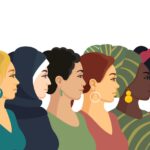A Better Culture is a new initiative looking to create health workplace environments free from bullying, sexual harassment and racism.
As the former director of medical services of the United Nations, Dr Jillann Farmer has had the kind of career most people could only aspire toward.
But a strange thing happens to her nearly every clinical shift.
“I used to think it was because I was young,” she told The Medical Republic.
“But now I’m definitely not young – my hair is white.”
The “it” normally comes in the form of a question: “when can I see the doctor?”
“Your brain is diverted off into the ‘what’s going on here, why don’t they understand that I am the doctor?’” she said.
“I’ve walked in, I’ve introduced myself as a doctor and I have ‘doctor’ written on my scrubs.”
Mistaken identity is just the tip of the iceberg – in the last 12 months, Dr Farmer has even had a patient flatly refuse to accept a diagnosis and treatment plan because “women doctors don’t know what they’re doing”.
Dr Farmer, who currently works in a rural Queensland emergency department, is CEO of a new initiative to help address discrimination in healthcare.
A Better Culture is being overseen by the Royal Australasian College of Medical Administrators but has a diverse advisory board with representatives from across the different medical and allied health fields.
It’s been on the go since the middle of the year but had its first board meeting earlier this week.
RACGP president Dr Nicole Higgins, who is on the A Better Culture board, said it would be looking at how to “create a culture of belonging, inclusion and diversity within medicine”.
“The project’s remit at the moment is to develop a multifaceted engagement strategy to [create] tangible, achievable approaches that will make inroads into this complex issue,” Dr Farmer said.
While the main focus will be on changing medicine from the inside, Dr Farmer said there would also be room to work with consumer organisations around patient behaviour like the examples described at the top of this story.
“We know that there has to be greater tolerance than in general society where people are seeking health care and we do have to cut them a bit of slack on what might be the worst day of their life,” she said.
“But at the same time, health care workers – like all other workers – have the right to a safe workplace, and the Australian Safe Work model code of practice now recognises that psychosocial hazards are a form of workplace harm.
“It’s a balancing act – we have to look after people, but we also don’t have to just stand in front of the bullets and get shot.”
Although A Better Culture is aiming big, Dr Farmer is starting small.
The current medical training survey, for instance, doesn’t contain a question explicitly asking about sexual harassment.
Dr Farmer is in dialogue with the Medical Board of Australia about getting one added in.
She is also challenging her colleagues to critically engage with the data that comes out of that survey.
Data from the international medical graduate cohort, for instance, tells an interesting story.
Just 17% of internationally trained doctors report experiencing bullying, harassment, discrimination or racism compared to 22% of the general population.
Where 16% of overseas doctors reported that they witnessed any of the above, this sat at 30% for the general population.
“[Our overseas trained colleagues] are much less likely to report [these behaviours], and that’s a real concern,” Dr Farmer said.
“I think it masks and allows us to pretend that everything’s okay with our international medical graduate colleagues, but when you have conversations with them about their day-to-day experiences, it does not correlate with the data.”
Another limitation of the medical training survey report is that it does not routinely compare experiences across genders.
Technically, a particularly curious individual can pull down the data about men and women separately and manually reconstruct a comparative report.
Dr Farmer has, of course, done this.
She provided TMR with a sample, comparing responses from male and female doctors belonging to the same college.
While 21% of female trainees said they were on the receiving end of discrimination, just 7% of male trainees reported the same.
The aggregated results indicated that just 12% of the college’s trainees experienced discrimination, effectively masking the issue.
“It just shows what you can achieve by gender disaggregating the data, and I think we should be insisting on that for all workforce reports in medicine now,” she said.
Another aspect of the data that stands out to Dr Farmer is the difference in responses to the statement “racism is not tolerated in my workplace”.
While 85% of the general population responded that they disagreed with this statement, this was true for only 69% of the Aboriginal and Torres Strait Islander respondents.
“The general population think that this ‘not tolerating racism’ thing is coming along very nicely, but Aboriginal and Torres Strait Islander doctors tell a very different story,” Dr Farmer said.
“I think that that’s a really interesting point and … it’s a challenge to us all to reflect on the fact that what we think is the lived experience of others is not necessarily the reality of their lived experience.”





